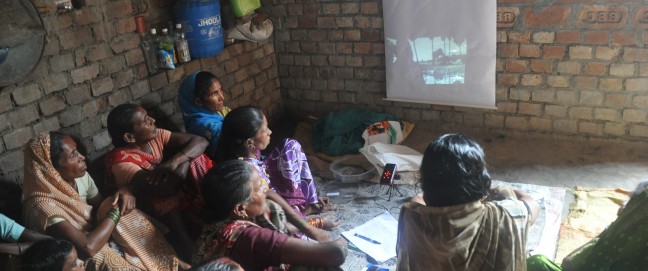Last year, LIFT started working with a man named Mr Assefa who, despite working full time, lives several thousand dollars below the US federal poverty line of just $28,410 annually for a family of five. Mr Assefa’s three daughters are among the 14.7 million children in the US who currently live in poverty. That’s 1 in 5 children under the age of 18 – or, worse, 1 in 4 under the age of five. When we started to build LIFT’s Constituent Voice (CV) system last year, a crucial question was: how would it help us serve people like Mr Assefa and his daughters better?
LIFT’s advocates help people (‘members’) build the personal, social and financial foundations they need to weather tough times and achieve stability. Members are put in the driver’s seat to set goals, with their volunteer advocate in the passenger seat as a partner and support.
We had been collecting outcomes data on our members for years – data like whether they found a job or got into safe housing or obtained food assistance for themselves and their kids. But we weren’t measuring what was at the core of our work – personal and social foundations like self-efficacy and connectedness to communities. So we started asking ourselves, what could ‘soft’ data like whether they felt respected at LIFT or more connected to their communities tell us that 14 years of ‘hard’ outcomes data did not? Could it help us figure out a more effective way to help our members lift themselves out of poverty for good?
Our journey with Constituent Voice
A couple of years ago, we came across Keystone Accountability’s Constituent Voice (CV) methodology. The idea behind it is a simple one: that social sector interventions should be responsive to the people they are intended to help. In our case, we should ask our members what they think about our programme and put that feedback at the heart of how we think about, adapt, and implement our strategy.
Here’s how we put it into action at LIFT. Our volunteer advocates meet with members for an hour or more about once a week to help them make progress on the goals that they define as being most important in their lives, typically, things like finding a job or getting food assistance for their families. At the end of each meeting, we administer short surveys to members and ask them to respond, on a scale of 0-10, to statements like ‘Today at LIFT, I was treated with courtesy, dignity and respect’ or ‘I would recommend LIFT to a friend or relative’. We analyse the data, speak directly to members to gain their insights into how we can do better, then make changes to improve the way we operate.
So where does the elusive predictive indicator come in?
As part of our analysis, we take the subjective feedback from our CV surveys and triangulate it against our database of member progress towards their goals to see if members who give us higher scores make more progress on their goals. LIFT’s hypothesis is that the two are related and that our relationship metrics will be predictive of member progress.
https://www.youtube.com/watch?v=_PQyPJ-sXPs&feature=youtu.be
Through our analysis we’ve found that overall, members who give us high scores (Promoters) take more steps towards their goals than those who give us low scores (Detractors). As an example, Promoters for the statement ‘LIFT helps me with the goals and priorities that I think are most important’ achieve more progress towards their goals than Detractors. This gives us early but promising support for the hypothesis that partnering on members’ priorities – not our ideas about their priorities – is a more effective way to achieve results.
We also see that Promoters for the statement ‘I am more connected to the community and community resources thanks to LIFT’ make five times as much progress as Detractors. These early findings give preliminary support for LIFT’s core belief that strengthening members’ social capital is key to achieving results.‘These early findings give preliminary support for LIFT’s core belief that strengthening members’ social capital is key to achieving results.’
For an anti-poverty organization like LIFT, where true economic mobility can take years to achieve, insights like this could be game-changing. If CV really does prove to be as predictive for LIFT’s outcomes as customer feedback has been for corporations, it can be a powerful tool to help LIFT anticipate outcomes and get a sense of where there are opportunities to improve our programme while we’re in the process of delivering it.
Now, can CV alone prove that LIFT’s work has caused members to make progress? Maybe not, but we believe it can give us helpful insight into why members make progress and help us predict our overall impact. As Keystone founder and CEO David Bonbright often says, ‘who needs causality when you have predictability?’. Here’s hoping he’s right.
For more information
http://www.liftcommunities.org








Comments (0)